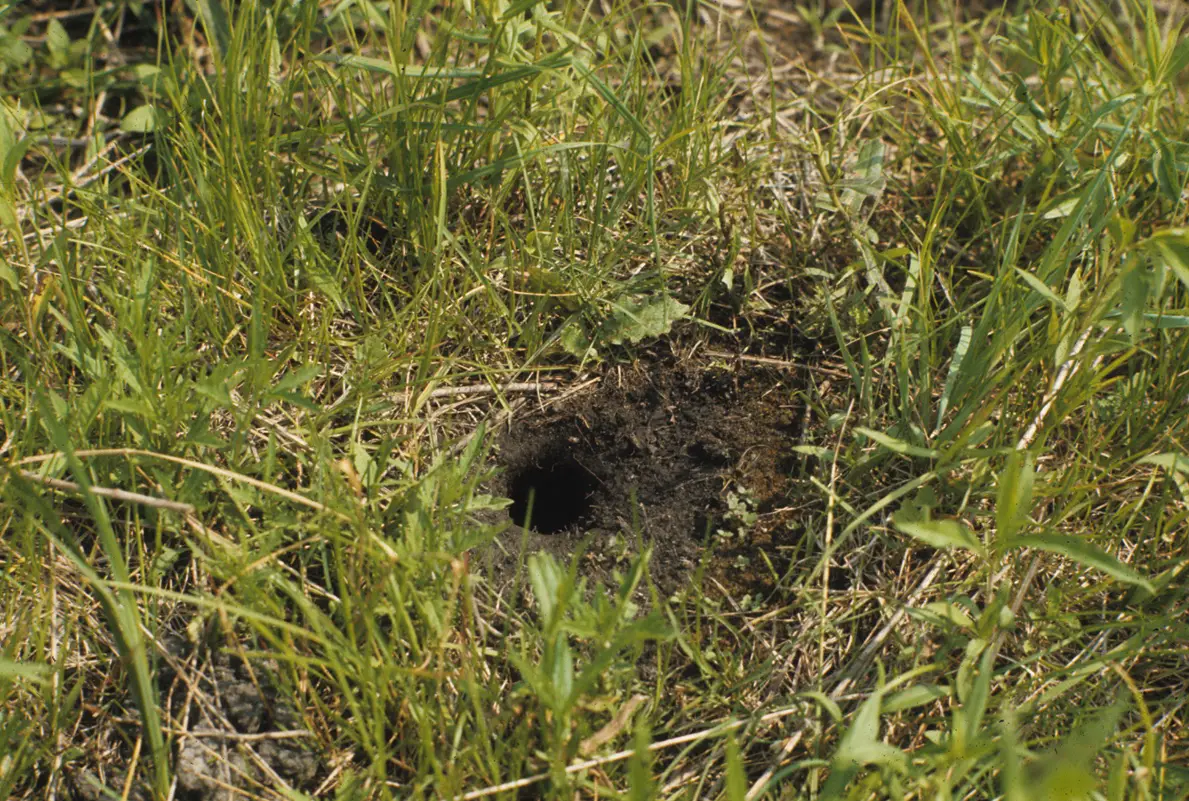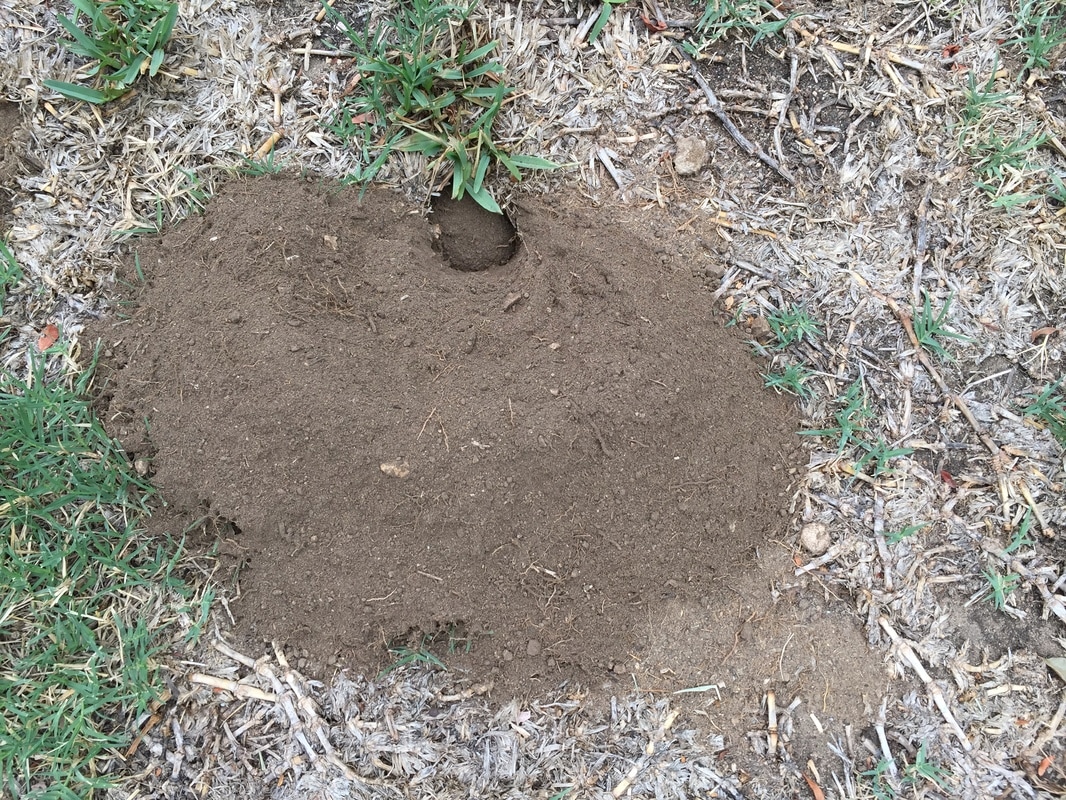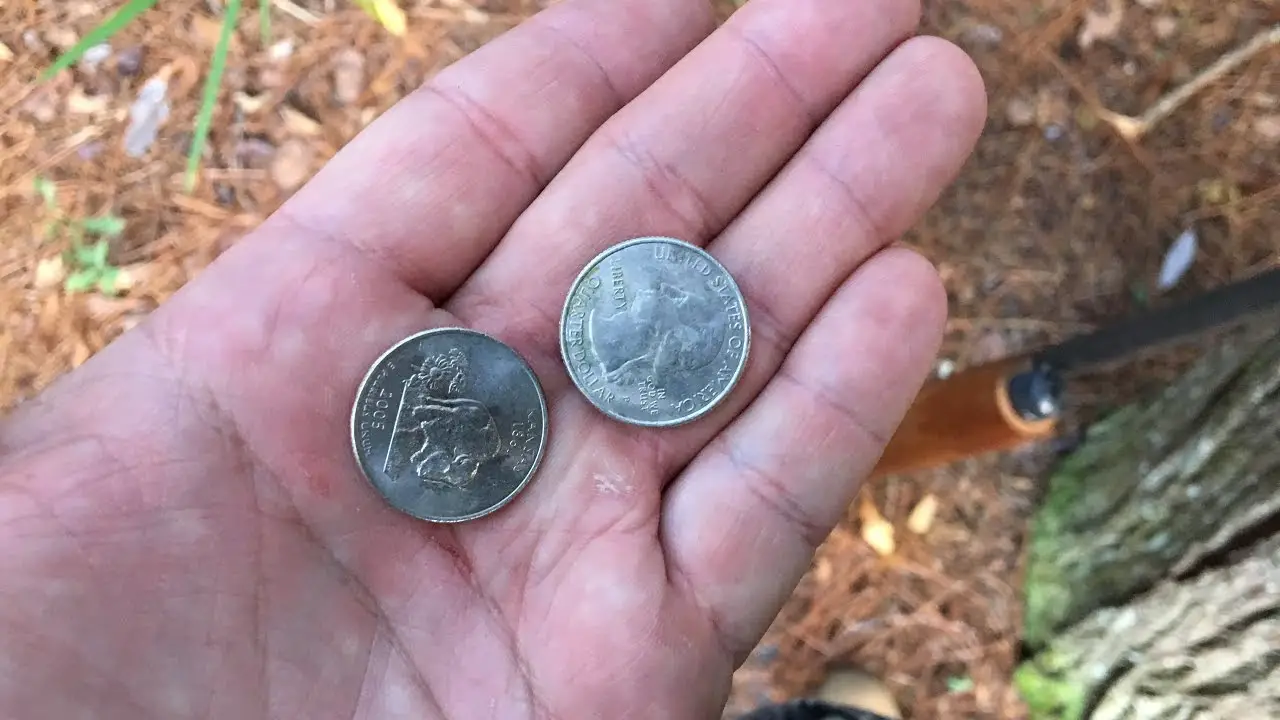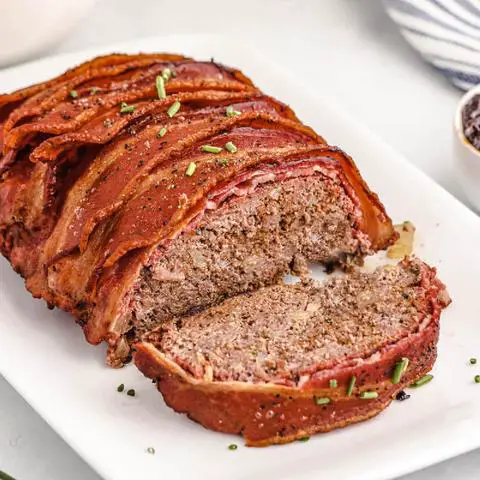
Ground squirrel holes are small, circular openings about 4 inches in diameter. They often have mounds of dirt around the entrance.
Ground squirrels create burrows that serve as their homes and storage spaces. These burrows can be extensive, featuring multiple entrances and tunnels. The holes are usually well-hidden in grassy or wooded areas, making them hard to spot. Ground squirrels dig these holes to escape predators and harsh weather conditions.
Their burrows can sometimes damage gardens, lawns, and even building foundations. Recognizing these holes can help in managing ground squirrel populations. Proper identification is crucial for implementing effective control measures to protect your property.

Credit: www.groundsquirrelbmp.com
Introduction To Ground Squirrel Burrows
Ground squirrels are fascinating creatures. They create intricate burrows underground. These burrows serve as homes and protection from predators. Identifying ground squirrel holes is important for homeowners and gardeners. In this section, we’ll explore what these burrows look like.
Importance Of Identification
Knowing how to identify ground squirrel holes can help manage and prevent damage. Ground squirrel burrows can harm lawns and gardens. These burrows have specific characteristics. Recognizing these features can save your plants and structures.
- Size: The holes are usually about 3-4 inches in diameter.
- Shape: They are round and have smooth edges.
- Location: Often found in open, grassy areas.
Ground squirrel holes are often mistaken for other animals’ burrows. Let’s clear up some common misconceptions.
Common Misconceptions
Many people confuse ground squirrel holes with other burrows. Here are some common misconceptions:
| Misconception | Truth |
|---|---|
| Rabbit Holes | Rabbit holes are larger and usually have a more oval shape. |
| Mole Tunnels | Mole tunnels are smaller and often have raised ridges. |
| Snake Holes | Snake holes are narrower and often found near water sources. |
Understanding these differences can help you correctly identify ground squirrel burrows. This knowledge is crucial for effective management.

Credit: burrowblocker.blogspot.com
Physical Characteristics
Ground squirrels are common in many areas. Their holes have distinct features. Identifying these features can help you spot them easily.
Size And Shape
The size of ground squirrel holes can vary. Usually, they are about 4 inches in diameter. This size is enough for them to enter and exit easily.
The shape of the hole is circular. It appears neat and well-maintained. The tunnel inside can be quite long.
Key Size and Shape Features:
- Diameter: 4 inches
- Circular shape
- Well-maintained appearance
Entrance Features
The entrance of a ground squirrel hole has specific features. There is often loose soil around the opening. This soil is pushed out as they dig.
There are usually multiple entrances to one burrow system. This helps them escape from predators. The entrances are often hidden under bushes or rocks.
Key Entrance Features:
- Loose soil around the opening
- Multiple entrances
- Often hidden under cover
Location And Habitat
Ground squirrels are fascinating creatures known for their burrowing habits. These small mammals create intricate tunnels in specific environments. Understanding their preferred locations and habitats is key to identifying ground squirrel holes.
Preferred Environments
Ground squirrels thrive in open areas with loose soil. They prefer places where they can dig easily. Common environments include:
- Grasslands
- Pastures
- Open woodlands
- Parks
The loose soil in these areas aids in quick burrowing. Ground squirrels avoid densely forested areas. They also avoid wet or marshy ground.
Common Locations
Ground squirrel holes are found in many locations. Some frequent places include:
| Location | Characteristics |
|---|---|
| Lawns | Short grass, easy digging |
| Golf Courses | Open spaces, maintenance activities |
| Farmlands | Crop fields, loose soil |
| Roadsides | Less traffic, open ground |
In these locations, ground squirrels create networks of tunnels. They often dig near food sources. Their holes are usually 2-4 inches in diameter. These burrows can extend several feet underground.
Seasonal Variations
Ground squirrel holes change with the seasons. Their appearance and activity vary greatly. Let’s explore how these burrows look in different times of the year.
Spring And Summer
During spring and summer, ground squirrels are most active. Their burrows have freshly dug soil around them. You may see multiple entrances.
- Fresh soil around holes
- Multiple entrances for easy escape
- Grass and plants near the openings
These holes are usually clean and well-maintained. Squirrels use them to escape predators and store food.
Fall And Winter
In fall and winter, ground squirrels prepare for hibernation. Their burrows look different during these months.
| Feature | Description |
|---|---|
| Entrance Size | Often partially closed |
| Soil Condition | Less fresh soil around holes |
| Vegetation | More covered with leaves and debris |
The burrows might appear less active. Squirrels use them to stay warm and safe.
Comparison With Other Animal Burrows
Understanding what ground squirrel holes look like can help in identifying and managing them. Comparing their burrows with those of other animals gives clarity. This section will explore the differences between ground squirrel holes, rabbit holes, and mole tunnels.
Rabbit Holes
Rabbit holes are often larger than ground squirrel holes. They have a clean and round entrance.
| Feature | Ground Squirrel Holes | Rabbit Holes |
|---|---|---|
| Size | 2-4 inches | 4-6 inches |
| Entrance Shape | Rough | Round |
| Location | Open fields | Near bushes |
Mole Tunnels
Mole tunnels look different from ground squirrel burrows. Their entrances are usually hidden.
- Size: Mole tunnels are about 1-2 inches wide.
- Shape: The tunnels are long and winding.
- Location: Often under lawns and gardens.
To summarize, ground squirrel holes are unique. They are rough and small. Rabbit holes are larger and round. Mole tunnels are hidden and winding. Knowing these differences helps in identifying the burrow’s owner.
Signs Of Active Burrows
Identifying active ground squirrel burrows is crucial for effective pest control. Knowing the signs helps pinpoint the problem areas. Here are key indicators of active burrows.
Fresh Soil
One of the most obvious signs of active burrows is fresh soil. Ground squirrels dig and push soil to the surface. Look for small mounds of loose dirt around the entrance. These mounds are usually free of vegetation.
Tracks And Droppings
Ground squirrels leave behind clear tracks near their burrows. The tracks often show small, four-toed footprints with claw marks. Another sign is the presence of droppings. Ground squirrel droppings are small, dark, and cylindrical.
| Indicator | Description |
|---|---|
| Fresh Soil | Loose dirt mounds around burrow entrance |
| Tracks | Small, four-toed footprints with claw marks |
| Droppings | Small, dark, cylindrical feces |
Potential Dangers
Ground squirrel holes can pose significant risks. These risks affect property and health.
Impact On Property
Ground squirrel holes can damage lawns and gardens. They create unsightly mounds of dirt. These holes can cause uneven ground. This uneven ground can trip people and pets.
Burrowing can weaken the soil structure. It may lead to soil erosion. This erosion can damage plants and trees. Burrowing near foundations can be particularly harmful. It may compromise the stability of buildings.
Ground squirrels often dig near underground utilities. This can damage water lines, gas pipes, and cables. Fixing these damages can be costly.
Health Risks
Ground squirrels can carry diseases. These diseases can affect humans and pets. One common disease is plague. Another is tularemia. Both are serious and need medical attention.
Ground squirrels also host fleas and ticks. These parasites can spread diseases. Fleas can cause itching and discomfort. Ticks can transmit Lyme disease.
Handling ground squirrels or their nests can be risky. Avoid touching them without protection.
| Potential Danger | Description |
|---|---|
| Soil Erosion | Weakens soil structure, affects plants and trees |
| Foundation Damage | Compromises building stability |
| Utility Damage | Affects water lines, gas pipes, and cables |
| Disease Spread | Plague, tularemia, Lyme disease |
| Flea and Tick Infestation | Causes itching, spreads diseases |

Credit: www.alamy.com
Preventive Measures
Ground squirrels can cause damage to your yard. Preventive measures can help keep these rodents at bay. Here are some ways to manage and prevent ground squirrel holes.
Habitat Management
Managing the habitat is the first step. Keep your yard clean and tidy. Remove any potential food sources. Ground squirrels love seeds, nuts, and fruits. Use trash cans with tight lids. Clean up fallen fruit from trees.
Maintain your lawn regularly. Mow the grass often. Trim bushes and shrubs. This makes your yard less attractive to ground squirrels.
Exclusion Techniques
Exclusion techniques can keep ground squirrels out. Use wire mesh or fencing around gardens. Make sure the fence is at least 12 inches deep. Ground squirrels can dig under shallow fences.
Install barriers around tree trunks. Use metal or plastic tree guards. This prevents ground squirrels from climbing.
Seal any holes or gaps in buildings. Ground squirrels can enter through small openings. Use caulk or steel wool to close gaps.
A combination of habitat management and exclusion techniques works best. Stay vigilant and act quickly to prevent ground squirrels from taking over your yard.
Frequently Asked Questions
What Do Ground Squirrel Holes Look Like?
Ground squirrel holes are small, round, and typically 2-4 inches in diameter. They usually have a clean, smooth entrance. The holes often lead to burrows with multiple chambers and tunnels.
How Deep Are Ground Squirrel Holes?
Ground squirrel holes can be quite deep, often extending up to 6 feet underground. They consist of intricate tunnel systems with multiple exits and entrances.
Where Can You Find Ground Squirrel Holes?
Ground squirrel holes are commonly found in open fields, gardens, and along embankments. They prefer areas with loose, well-drained soil for easy digging.
Are Ground Squirrel Holes Dangerous?
Yes, ground squirrel holes can be dangerous. They pose a tripping hazard and can damage landscapes and foundations. Their burrowing activity can also undermine structures.
Conclusion
Ground squirrel holes are small, round, and often found in clusters. Identifying these burrows helps manage your yard better. Knowing what to look for can prevent damage and ensure a healthy environment. With this knowledge, you can effectively address any ground squirrel issues.
Stay vigilant and protect your space from these burrowing creatures.
Learn More About Grilling
If you want to learn more about grilling, check out these other helpful resources!






